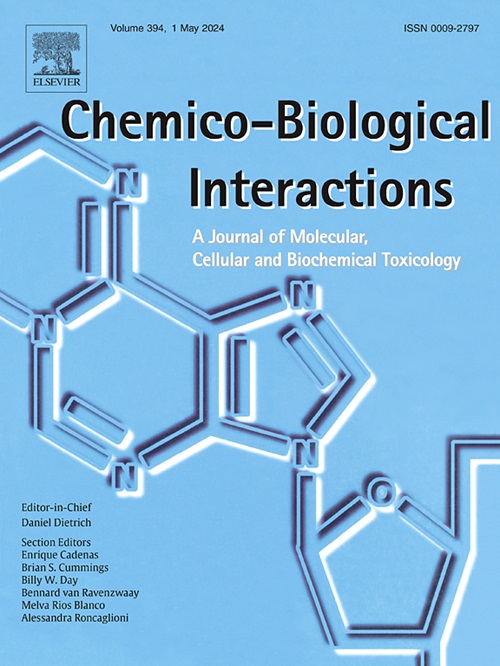Integrated network pharmacology, bioinformatics, and experiment analysis to decipher the molecular mechanism of Salidroside on Gastric cancer via targeting NCOA4-mediated ferritinophagy
IF 4.7
2区 医学
Q1 BIOCHEMISTRY & MOLECULAR BIOLOGY
引用次数: 0
Abstract
Gastric cancer (GC) is a highly aggressive and heterogeneous malignancy. The process of ferroptosis regulates tumor growth and represents a promising therapeutic target for GCs. Despite Salidroside (Sal) being able to regulate ferroptosis in a variety of diseases, there are still limited reports on its therapeutic effects and potential targets in treating GC. This study aimed to investigate the potential mechanism of Sal-induced ferroptosis in GC. Our analysis, integrating databases like PharmMapper, Swiss Target Prediction, TargetNet, GeneCards, TTD, OMIM, STRING, and DAVID. Human gastric cancer MGC803 cells and tumor-bearing mice were used to evaluate the anti-tumor effect of Sal on GC in vitro and in vivo. CCK-8, LDH, and Calcein-AM/PI were used to assess cell viability and damage. FerroOrange, Lillie's Ferrous Iron Stain, MDA, ROS, BODIPY™ 581/591C11, GSH, and GPxs were used to detect intracellular Fe2+ concentration, lipid peroxidation level, and antioxidant defense system. qRT-PCR and Western blot were performed to explore relevant mechanism studies. Network pharmacology results showed that Sal shares 322 targets with GC, which have biological functions related to lipid metabolism, cell death, and lipid peroxidation. Experiments further confirmed that Sal inhibits MGC803 cells by inducing ferroptosis, as evidenced by the induction of elevated Fe2+ and increased lipid peroxidation. Fer-1, an inhibitor of ferroptosis, reversed the anti-GC effect of Sal in MGC803 cells and GC tumor-bearing mice. Further confirmation of the association between Sal and ferroptosis in GC. Subsequently, bioinformatics and machine learning algorithms identified nuclear receptor coactivator 4 (NCOA4) as a candidate signature gene associated with ferroptosis in GC, and molecular docking shows that NCOA4 binds Sal. We then performed in vivo and in vitro experiments to elucidate that Sal targeting NCOA4, a cargo receptor mediating ferritinophagy, mediates autophagic degradation of ferritin heavy chain 1 (FTH1, Fe2+ storage protein), which further increases Fe2+ and lipid peroxidation. In addition, Sal induces mitochondrial dysfunction and increases mitochondrial ROS levels, which activates autophagy and triggers autophagic degradation of FTH1. Taken together, we revealed that NCOA4 is a new target for Sal-anchored GC and that Sal may be a potential therapeutic drug for the treatment of GC.
结合网络药理学、生物信息学和实验分析,通过ncoa4介导的铁蛋白吞噬,解读红红草苷对胃癌的分子机制。
胃癌(GC)是一种高度侵袭性和异质性的恶性肿瘤。铁下垂过程调节肿瘤生长,是GCs的一个有希望的治疗靶点。尽管红景天苷(Salidroside, Sal)能够调节多种疾病中的铁下垂,但关于其治疗GC的疗效和潜在靶点的报道仍然有限。本研究旨在探讨盐致胃癌铁下垂的可能机制。我们的分析,整合了PharmMapper、Swiss Target Prediction、TargetNet、GeneCards、TTD、OMIM、STRING和DAVID等数据库。以人胃癌MGC803细胞和荷瘤小鼠为实验对象,研究了Sal对胃癌的体外和体内抗肿瘤作用。CCK-8、LDH、Calcein-AM/ PI检测细胞活力和损伤程度。使用FerroOrange、Lillie’s Ferrous Iron Stain、MDA、ROS、BODIPY™581/591 C11、GSH和GPxs检测细胞内Fe2+浓度、脂质过氧化水平和抗氧化防御系统。采用qRT-PCR和western blot方法探讨相关机制。网络药理学结果显示,Sal与GC共有322个靶点,这些靶点具有与脂质代谢、细胞死亡和脂质过氧化有关的生物学功能。实验进一步证实,Sal通过诱导铁下垂抑制MGC803细胞,表现为诱导Fe2+升高和脂质过氧化增加。铁下垂抑制剂fe -1在MGC803细胞和胃癌荷瘤小鼠中逆转了Sal的抗GC作用。进一步证实了GC中Sal与铁下垂之间的关系。随后,生物信息学和机器学习算法鉴定出核受体共激活因子4 (NCOA4)是GC中与铁ptosis相关的候选特征基因,分子对接显示NCOA4与Sal结合。然后,我们通过体内和体外实验来阐明,Sal靶向介导铁蛋白自噬的货物受体NCOA4,介导铁蛋白重链1 (FTH1,铁2+储存蛋白)的自噬降解,从而进一步增加铁2+和脂质过氧化。此外,Sal诱导线粒体功能障碍,增加线粒体ROS水平,激活自噬,触发FTH1的自噬降解。综上所述,我们发现NCOA4是盐锚定GC的新靶点,Sal可能是治疗GC的潜在治疗药物。
本文章由计算机程序翻译,如有差异,请以英文原文为准。
求助全文
约1分钟内获得全文
求助全文
来源期刊
CiteScore
7.70
自引率
3.90%
发文量
410
审稿时长
36 days
期刊介绍:
Chemico-Biological Interactions publishes research reports and review articles that examine the molecular, cellular, and/or biochemical basis of toxicologically relevant outcomes. Special emphasis is placed on toxicological mechanisms associated with interactions between chemicals and biological systems. Outcomes may include all traditional endpoints caused by synthetic or naturally occurring chemicals, both in vivo and in vitro. Endpoints of interest include, but are not limited to carcinogenesis, mutagenesis, respiratory toxicology, neurotoxicology, reproductive and developmental toxicology, and immunotoxicology.
文献相关原料
公司名称
产品信息
索莱宝
Lillie's ferrous iron Stain
阿拉丁
Ferrostatin-1
阿拉丁
Erastin
阿拉丁
3-methyladenine
阿拉丁
Ferrostatin-1 (Fer-1)
阿拉丁
Erastin
阿拉丁
3-methyladenine (3-MA)
阿拉丁
Ferrostatin-1 (Fer-1)
阿拉丁
Erastin
阿拉丁
3-methyladenine (3-MA)

 求助内容:
求助内容: 应助结果提醒方式:
应助结果提醒方式:


